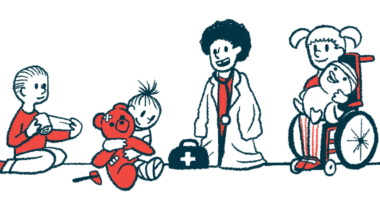Newborn screening most accurate between days 3 and 6 after birth
Pre-term babies may benefit from repeat IRT test, study showed

The IRT test, commonly used for screening newborn for cystic fibrosis (CF), is most accurate when performed between three to six days after at-term babies have been born, a study shows.
A repeat IRT test may be diagnostically useful in certain cases, such as for very pre-term babies, according to the study, “Immunoreactive trypsinogen in healthy newborns and infants with cystic fibrosis,” which was published in ADC Fetal & Neonatal.
Newborn screening programs, where infants are tested for CF within the first days after birth, are becoming increasingly common. The IRT test is generally used as the first-line screen for CF. It measures levels of the protein IRT (immunoreactive trypsinogen) in a drop of blood from the baby’s heel.
The IRT protein is made by the pancreas and in CF it tends to become elevated due to mucus clogging the ducts of the pancreas. Babies with elevated IRT levels can be referred for further testing to confirm the diagnosis.
The researchers compared IRT values in blood samples from more than 815,800 babies as part of the CF newborn screening program in Switzerland between 2011 and 2019.
“This is the first study to describe the course of IRT in children with and without CF … on a large data set in the context of CF [newborn screening],” the scientists wrote.
Testing for IRT levels in term, preterm babies
Among all the children, the median day for testing was four days after birth. The median gestational age — the estimated time since the first day of a woman’s last menstrual cycle, typically about 40 weeks at birth — was 39 weeks.
IRT values tended to be higher in preterm babies tested at a gestational age under 33 weeks, though levels varied substantially among individual preterm babies, statistical analyses revealed. Given these variations, the researchers recommended a second IRT test two weeks after birth that would serve as the relevant result for newborn screening when babies are born very early.
IRT levels also were increased in babies born at 43 weeks of gestational age or later, though such a late gestational age is uncommon — less than 0.07% of all births, the researchers noted.
Among babies born at term, the researchers found IRT values varied, depending on the timing of testing. Specifically, values tended to be higher if testing was done before day three or after day six of life. This means the window of time between day three and day six is the best time to test for CF, they said, noting most (98%) tests in the dataset were performed in this time window.
Among the children screened, 232 were diagnosed with CF. Another 27 were positive in the initial screen, but had inconclusive results in further diagnostic tests. In Europe, this is referred to as “CF screen positive, inconclusive diagnosis (CFSPID).” In the U.S., babies with this combination of diagnostic tests are labeled “CF-related metabolic syndrome (CRMS).”
IRT levels tended to remain stable (and elevated) over time among the children diagnosed with CF, analyses showed. IRT levels also were stable over time for those without CF. The levels tended to start high (leading to an initial identification of CFSPID/CFMD) and then decrease to within normal limits on follow-up assessments a few weeks later in patients with CFSPID/CFMD.
“Our data suggest that infants with CF and CRMS/CFSPID could be discriminated with a second IRT measurement at the age of 14-26 days,” the researchers wrote, noting a second measurement may help in cases where other diagnostic assessments like the sweat test don’t provide clear results, which is often the case in preterm or underweight infants. For these patients, “an additional IRT test may help distinguish between healthy infants from children with CF and those with CRMS/CFSPID.”








